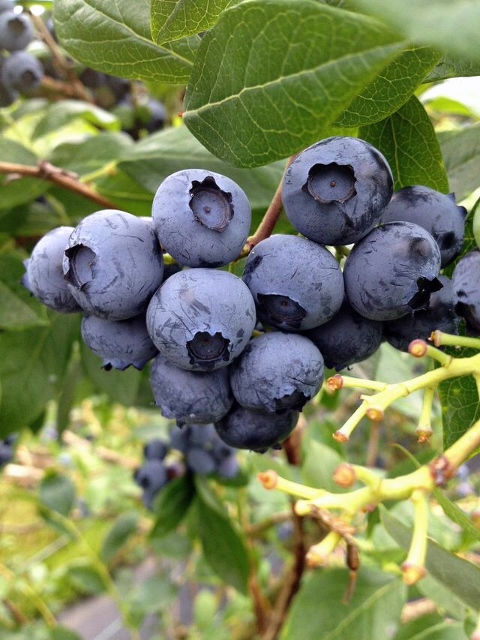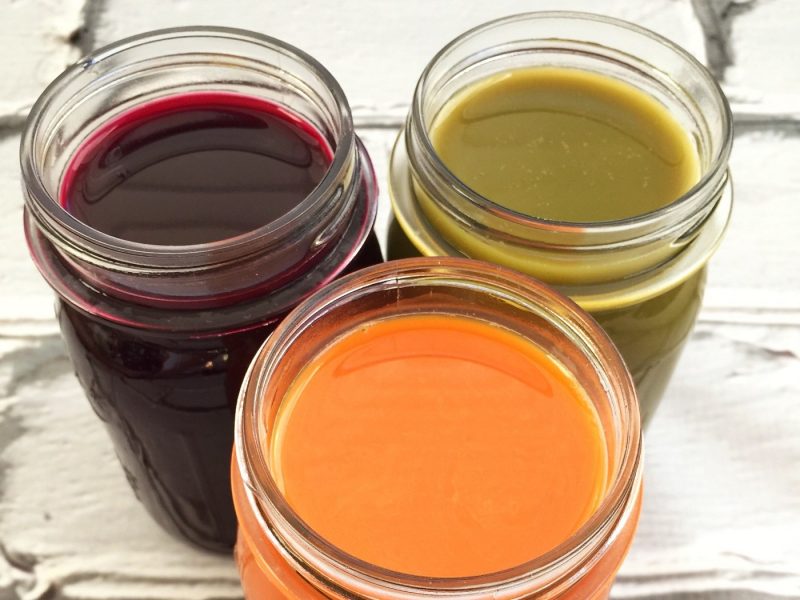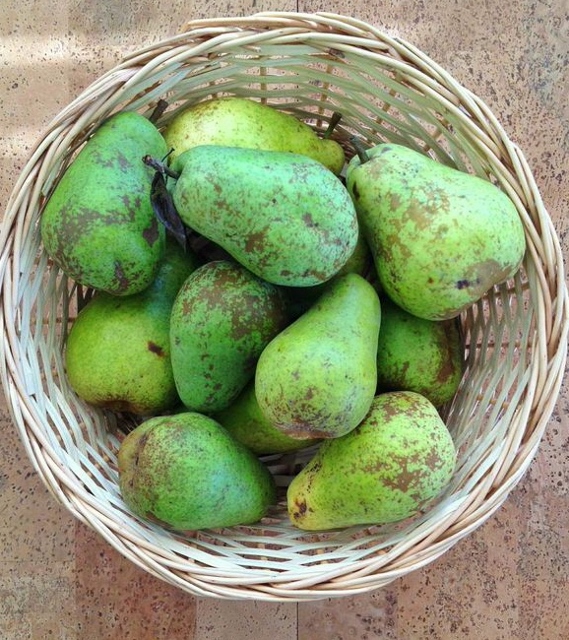Have you ever asked yourself, “Should I be juicing?” I mean you see all kinds of recipes for juice concoctions on food blogs, and the refrigerator shelves at the grocery store are lined with colorful bottles of fancy juices, and it seems like a pretty healthy habit. Well, my answer is that it depends. As with most questions about food and nutrition, the answer isn’t always straightforward but requires some further explanation. It also depends on who’s asking.
Out of 100+ posts on my blog, one of the top 5 most viewed is a review of a juice fast I did last year. So when Williams-Sonoma asked me and other health and nutrition bloggers to address some common questions about the practice, I thought it would be worth sharing.
Q: As a dietitian, what are your thoughts on juicing on a daily basis? Is it healthy for someone to replace their breakfast with fresh juice or would you suggest they supplement it with a breakfast meal?
A: I think juicing on a daily basis can be a good habit, with a few additional considerations. Variety is one feature of a nutritious diet, so I would be looking for variation in a couple of different ways. First, are you changing up the vegetables and fruits you’re juicing each day or each week? Of course there would be seasonal influences but no one fruit or combination of vegetables and fruit that you could juice meets all nutrient requirements. Carrots are higher in vitamin A and berries are a great source of vitamin C; even different varieties of apples have different phytochemical contents. So varying your choices helps you cover your nutritional bases.
And are you varying your breakfasts? As wonderful as vegetables and fruits are, they represent just 2 food groups. Ideally, some other types of food would show up during the week as well, like whole grains (granola made with oats, whole wheat muffin, quinoa hot cereal) or healthy protein (peanut butter, part skim mozzarella cheese, soymilk). And even though finding a healthy breakfast habit and sticking with it can make your morning routine easier, eating the same thing for breakfast each day doesn’t provide enough nutrient variety.
One other consideration…if you make a large glass of fresh juice and drink it with your breakfast meal you could end up overdoing the calories. If you wash down your two slices of peanut butter toast (420 calories) with 16 ounces of kale, cucumber, and apple juice (200 calories) you’ll spend over 600 calories before you even leave the house. I might suggest instead saving the juice and having it for lunch or a mid-morning snack. These numbers will vary, of course, but generally speaking you can assume vegetable juices are lower in calories than fruit juices.
Since we’re talking about making your own breakfast beverages, I should mention I’m also a big fan of smoothies for several reasons. Like fresh juice, they’re an easy way to get a couple of servings of fruit and vegetables in at breakfast without much hassle or cooking. But since you blend up the whole fruit, you gain all the benefits of the juice plus the fiber and fruit pulp. The same rules apply, of course: variety is key. There are lots of options for varying the recipe since you can add nuts or yogurt for protein, fortified almond milk for calcium and vitamin D, or chia seed for healthy fats, and it becomes a more balanced choice than straight juice. A nice compromise would be to use some fresh juice in your smoothie.
(One note of caution: be aware that some fruit juices can affect medications you may be taking. The most common example is grapefruit juice. You can read more about the phenomenon here and here.)

Q: Juicing can become very expensive when shopping for ingredients. What are some affordable tips you can give to someone who is starting their juicing journey?
A: Buy in bulk whenever you can, whether that’s at a warehouse store or your local food co-op. I also like to buy the “seconds” at the grocery store; they’re not pretty, but it doesn’t matter if you’re just going to pulverize them anyway. The store calls them “slightly blemished, undersized or misshapen.” I can often find a bag of 3 ugly apples or 9 beat-up mandarin oranges for $1.00. Also, research the best ways to store produce to maximize their shelf life so you really get your money’s worth: some should be refrigerated, others shouldn’t, some should be in the crisper drawer in a bag, others shouldn’t. You might check out this Produce Storage Guide from Vegetarian Times for some basic tips.
I certainly support buying organic whenever possible, and cost is definitely a consideration. I’d suggest keeping up with the most current Dirty Dozen Plus and Clean Fifteen lists from the Environmental Working Group to help you prioritize your organic dollars. There’s also an app for that.
Q: There are some fruits or veggies that you may need to peel before you eat them. Is that the case with juicing? Is it best to leave the skin on fruits and veggies seeing that is where most of the nutrients come from? What fruits or veggies should you peel before juicing and what ones should you leave the skin on?
A: I think it makes sense to follow a similar rule of thumb, as if you were going to eat them raw. If it is skin that’s not normally eaten it should probably be removed before juicing like melons, oranges, or pineapple. But if it’s an edible skin, I think you can leave it on like with cucumber, pears, or carrots. (It might depend on your particular juicer as well. Here’s a link to the collection from Williams-Sonoma if you want to take a peek at the different features and functions.)
Apples have been carefully studied and there appear to be beneficial antioxidants in the skin and the flesh. Since most of the skin, along with the seeds and core, ends up in the juicer’s waste receptacle it’s unclear how much of these nutrients are making it into the final juice product and how much is being tossed out or composted. Some research suggests it depends on the individual antioxidant and that yields in the juice vary; retention is as high as 80% for some and as low as 32% for others. So, not all is lost. However, I suppose some loss is not surprising…juicing is a form of “processing” apples and the nutrient content will never be as rich as eating a fresh, whole apple.
I think in the end, the answer to the question, “Should I be juicing?” really depends on where you’re at. If your normal breakfast is toaster pastries or an energy drink then yes, juicing would get you moving in a healthier direction. But it’s not the be-all-end-all of perfectly balanced breakfasts either. It shouldn’t stand alone as your morning meal 365 days a year. I think juicing, and the pounds of produce it can bring into your house, can help you evolve towards a better breakfast routine or be one part of a healthy breakfast repertoire.
How do you feel about juicing? Are you a newbie to this produce-loving habit or an old pro?
I didn’t receive any compensation for sharing this post. Just participating in a series on a singular topic coordinated by Williams-Sonoma.
If you liked this post, you may also enjoy:

Kristine Duncan, Registered Dietitian
I’m a Registered Dietitian, the author of Veg Girl RD, and a vegetarian who loves to eat. I’m a nutrition nerd who teaches at the University of Washington and Skagit Valley College. I also write about nutrition professionally for magazines and books. If you want to know more, check out my About page.


